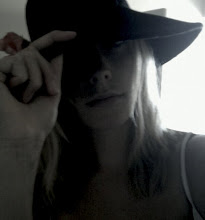Felting
Wet & Needle Felting
Felting websites:
http://www.ebsqart.com/artMagazine/za_287.htm pictures of bubble wrap felted fabric
http://www.gfwsheep.com/needlefelting/needlefelt1.html using felting needles to add decoration to felted fabrics
http://blog.craftzine.com/archive/felting/ great examples of felted projects & links to many creative sites
Felting supplies: this is just to get you started-many, many sites online
http://www.fibervilleusa.com/indexday.html many “shops” in the Midwest that have banded together to create a cyber mall-also list fiber events in the area-good network
http://www.marrhaven.com/ excellent source for wool roving-link to Michigan Fiber Festival
http://www.mielkesfiberarts.com/ I have purchased from them at Michigan Fiber Festival-good prices, “Bag of Candy” samples of many colors
Process:
Felt is made when the scales that are on the individual wool fibers interlock with the application of heat and agitation. Soap helps the scales open and interlock. The process produces a non woven fabric with unlimited variations. Felt can be made into flat fabric or 3 dimensional forms like hats or bags or solid forms like beads or sculptural shapes.
Fulling is the process of tightening fibers in an already created fabric and making them more compact-a controlled felting process that also results in shrinkage. This can make knitted or crochet garments or objects have a surface that appears to be made of felt and creates a more stable fabric or in the extreme fabric that becomes hard and unusable as a garment . Both of these processes are non-reversible, so particularly when fulling a garment proceed slowly-you can control the amount your garment will shrink .
Fiber Preparation and Choice:
Fiber preparation & the type of fiber is key to the type of felt and ease of production. Different sheep breeds and animals produce different quality fibers-choose the appropriate breed of animal for the type of felt you want to produce. Generally if you want to produce felt without purchasing cards or a drum carder for combing the fiber it is easiest to use roving that is produced for hand spinners. This is sold in a long, even, narrow strand of carded fiber so that the fibers are running in the same direction. Roving can be easily pulled apart to form the bats you will need to create larger pieces of felt. These lengths of roving also come in a huge variety of colors, both natural and dyed that can take another step out of the process.
Types of Wool
Fine, soft wool makes fine, soft, compact felt. Coarse wool makes thicker, hairier felt. Shrinkage also will vary with the type of felt, so particularly if you are fulling a finished garment you need to test a sample before working with your garment. If making wet felted fabric we can work more freely.
Merino is probably the most commonly available wool for felting and easily produces a soft, compact felt. Other fibers can be blended or used on the surface of the felt to modify the appearance. Corriedale is very similar in appearance & works well.
Angora can be blended to create a soft halo effect-these fibers can be hard to handle because of static so you may want to use a spray bottle to mist them as you work with them.
Silk fibers do not have scales to interlock, but if placed on top or held in place with thin layers of wool they can be added for luster.
Mohair fibers are harder, with longer, flatter scales that do not lend themselves to felting, but again may be used with wool to hold them in place.
Llama and alpaca will both felt and is sold in the natural colors of the animal-so shades of cream and brown.
www.besweetproducts.com
Pebble Carpet : made of 100% merino wool. designed by Ronel Jordaan in Johannesberg, South Africa, and made by women in a successful job creation program, this floor decor piece is made of hand dyed, carded and felted pebbles that resemble real rocks from nature and are then attached with thick durable cord. standard sizes are 50x50cm OR 60x65cm. custom sizes available. colors vary in each carpet (natural creams, grey tones, brown tones, and charcoals).


Step 1. If you want to design a shape-make a pattern from bubble wrap, with the
bubbles to the inside.
Step 2. Layer your roving (pulled off in thin tufts). Layer one with fibers running in the
same direction, layer two with fibers running perpendicular. Repeat layering
in alternating directions until bat has reached desired thickness. For a solid
fabric with good density this would probably mean 8-10 layers. This will vary
depending on how you pull and place your tufts, but more, thin layers
alternating will create a more stable fabric.
Step 3. Pour, or if creating small pieces like beads-dip, soapy water mixture. Any type
of soap may be used, but because your hands will be immersed in the mix I
like to use liquid dish soap or liquid hand soap since they are gentle to the skin
and I do not have to wait for a bar to dissolve, but bar & laundry soap also work
Step 4. Begin rubbing or rolling (for beads). If you plan to join a front and back piece
together do not felt to the outer edges of the piece, but leave a 1 1/2” fringe
around the edge that you can then layer with the other side and then felt the
pieces together.
Step 5. Continue rubbing, pounding agitating until the piece reaches the desired
consistency-the more you pound the firmer your fabric. The finished piece
can then be rinsed with cool water, rolled in a towel to remove excess moisture
and left to air dry.
If any areas of your fabric are thin you can add extra fiber using a needle punch tool or needle. Without the needle it will be very difficult to get two pieces of felt or extra fiber to join together.




Labels: DIY, fashion, felting, surface design, wool







